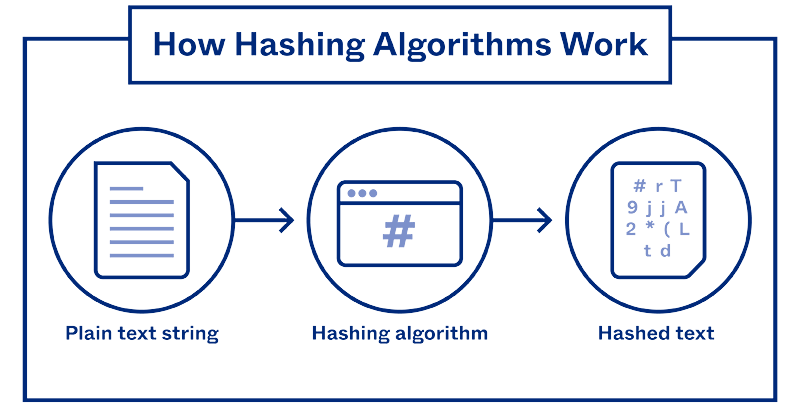



Hashing is a crucial concept in the world of computer science and cryptography.
To understand hashing, think of it as a way to transform any piece of data, whether it's a tiny message or a huge file, into a unique string of characters.
This string is called a hash. Imagine you have a complex picture, and you want to create a unique fingerprint for it.
No matter how big or detailed the picture is, the fingerprint is always the same size. That’s what hashing does to data.

When you input something into a hash function, it processes the input and generates a hash that looks like a random series of numbers and letters.
For example, if you input the word "hello" into a hash function, you might get something like "5d41402abc4b2a76b9719d9110".
If you change the input even slightly, like "Hello" (with a capital H), the hash will be completely different, like "8b1a9953c4611296a827abf8c".
This is a crucial property called the avalanche effect, which ensures that even the smallest change in the input results in a drastically different hash.
A common hash function used in many applications, including Bitcoin, is SHA-256. SHA stands for Secure Hash Algorithm, and the "256" refers to the 256-bit length of the hash it produces. This means no matter what you input, the hash will always be a 64-character hexadecimal number.
One important thing about hashing is that it’s a one-way process. Once you hash something, you can’t easily turn the hash back into the original data.
This is why hashing is often used for things like storing passwords. When you create a password, it gets hashed and stored. Later, when you log in, the system hashes the password you enter and checks if it matches the stored hash.
Hashes are also used to ensure data integrity. Imagine you're downloading a file, and you want to make sure it hasn’t been tampered with.
The file's creator can provide a hash of the original file. After downloading, you hash your copy and compare it to the original hash. If they match, you know the file is unchanged.
A Good Hash Function - - - - - - -